NYC’s Forgotten ‘War on Christmas Trees’
Discover how an obscure holiday crackdown affects festive street vendors today!


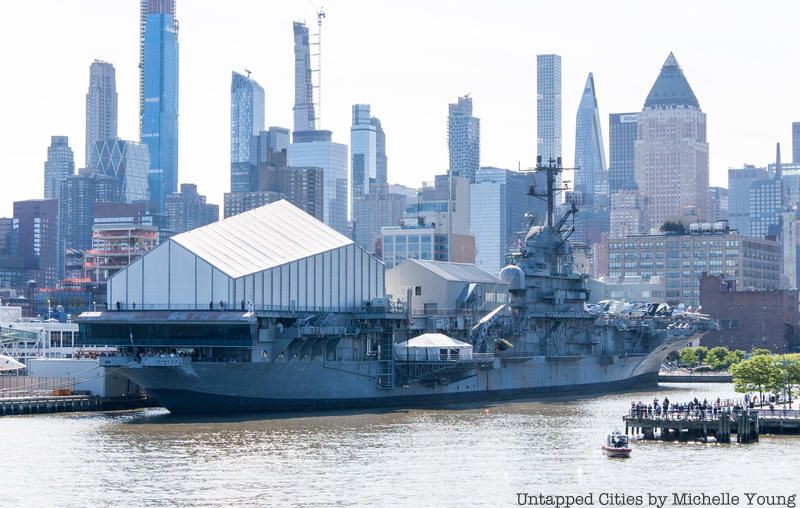
In the days before the modern day MTA, fire department and major roadways, boats and ships served a number of purposes in New York City history. Some boats were simply a means of transportation between boroughs and neighboring states, while others protected New York’s harbors during war. Here is a list of the top ten abandoned and retired boats in New York City (and one in New Jersey!)
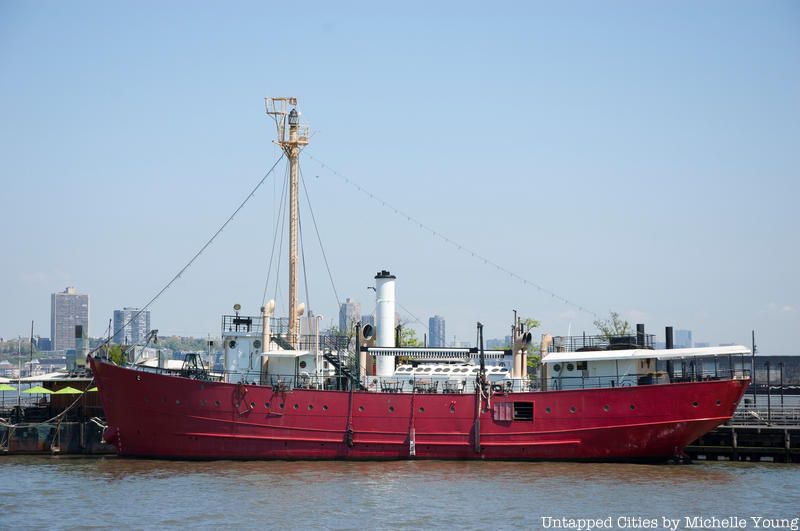
Before the Frying Pan called New York City its home, it was known as Lightship #115 Frying Pan in North Carolina. The lightship was built in 1929 and guarded the Frying Pan Shoals in Cape Fear, which at the time was the site of a number of shipwrecks in history. According to the Frying Pan website, the 15 men lived on the ship from 1930 to 1965. They were assigned to spend three months on the ship and two months on shore, and was a job that was filled with months of boredom followed by minutes of pure fear.” The ship was subsequently replaced by the Frying Pan Shoals Light Tower from 1966 to 2003. The Frying Pan was reportedly abandoned for 10 years at an oyster cannery in the Chesapeake Bay, and then sank in 1986.
After it was resurrected, the now-defunct lightship was sold to its current owners and is docked in front of Pier 66 Maritime Bar and Grill in Hudson River Park. The ship is currently open to visitors seven days a week from noon to 12 am, and is free to the public.
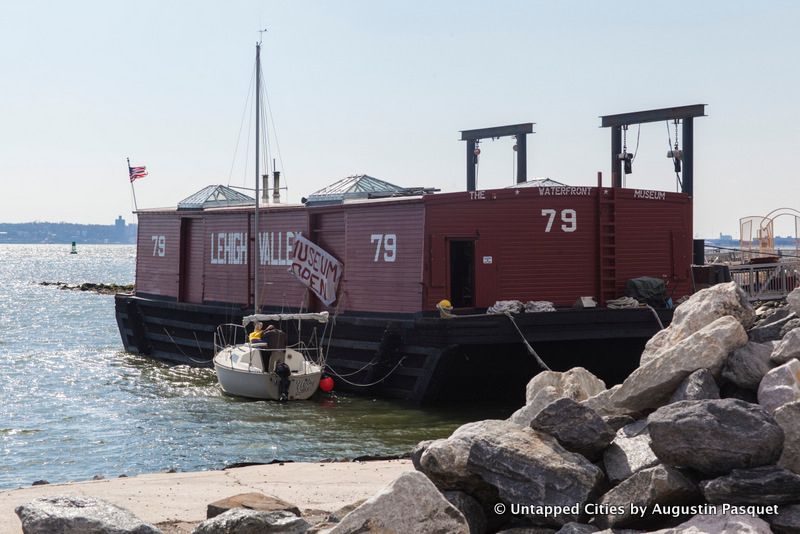
Next time you’re in Red Hook, Brooklyn, make a quick stop at the Waterfront Barge Museum. The museum is housed in the historic Lehigh Valley Railroad Barge #79, which was built in 1914 and owned by the railroad company. During that time, New York Harbor was the largest seaport in the world, and the Lehigh was one of thousands of barges that transported goods to and from the harbor. The barge was active until 1960, and in 1985, a man named David Sharpes bought it.
It opened in 1986 to educate the public and “expand waterfront access” in New York City. Before it was in Red Hook, there was a seven-year period where the museum was housed in a number of different locations, including Liberty State Park in Hoboken, New Jersey and South Street Seaport in New York City. Today people can visit the museum on Thursdays from 4-8 pm and Saturdays from 1-5 pm. Visit the Waterfront Museum’s website to learn more.

The Intrepid Sea, Air and Space Museums is a New York City tourist hotspot. But before the (say how big) ship was a museum, it served as a one of 24 World War II Navy aircraft carriers known as the USS Intrepid (CV-11.) According to the Intrepid’s website, the ship’s construction began on December 1, 1941, six days before the Pearl Harbor attacks. The ship went through World War II, the Cold War and the Vietnam War during its 33 years in service. Within these three decades, the Intrepid carried Navy aircrafts and was part of major battles, including the Battle of Leyte Gulf and the Battle of Okinawa.
In 1974, the Intrepid was decommissioned at Quonset Point, Rhode Island. Subsequently, a philanthropist named Zachary Fisher lead a campaign for the ship not to be scrapped, and in 1982, the Intrepid Sea, Air and Space Museum was opened. In 1986, it was placed on the National Register of Historic Places. The museum is open 365 days of the year and the specific times are listed here. Find out how to purchase tickets on the Intrepid Museum website.
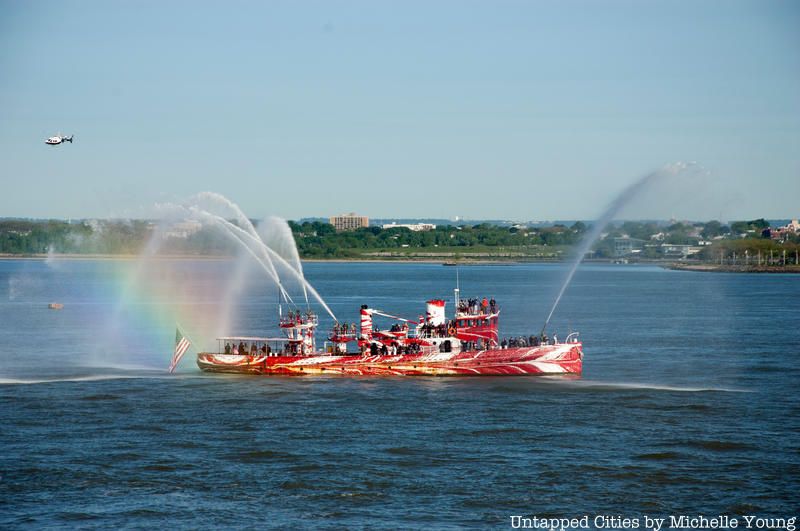
In the 1920s, the FDNY had a fleet of ten steam fireboats that it used, but the fleet began to age after ten years. A new fireboat, the John J. Harvey, was built to supplement, and eventually replace these steam boats. Plans to build the boat were drawn up in 1928, and by 1930 the Todd Shipbuilding Plant started the ship’s construction. According to fireboat.org, John. J Harvey is one of the most powerful fireboats ever built, measuring in at 130 feet long and 268 net tons. The fireboat had the capacity to pump out 18,000 gallons of water a minute. In 1931, the boat was commissioned and served the FDNY until 1994. In 1999, it was bought by a number of owners who boat host tours up the Hudson and the Long Island Sound. The retired boat was temporarily recommissioned following September 11, 2001.
Currently, the boat is housed at Pier 66 Maritime on the Hudson River, as is the former Frying Pan lightship.
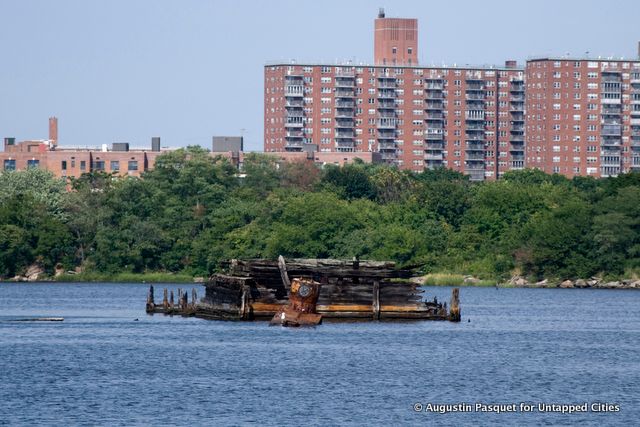
As Untapped Cities previously covered, there are number of abandoned ships at Coney Island Creek, making it a smaller ship graveyard similar to Arthur Kills in Staten Island. The remnants of these abandoned ships hearkens back to a time when boats were a prevalent means of transportation before faster options were available. The creek is home to at least 9 abandoned boats as well as a submarine. Before it was outlawed in the 1970s, most of the discarded boats in the creek underwent “scuttling” or deliberately sinking a boat by letting water flow into the hull. Though the ship graveyard is an “eyesore” the Coast Guard doesn’t consider the abandoned ships an “actionable offense” and leaves the boats as they are.
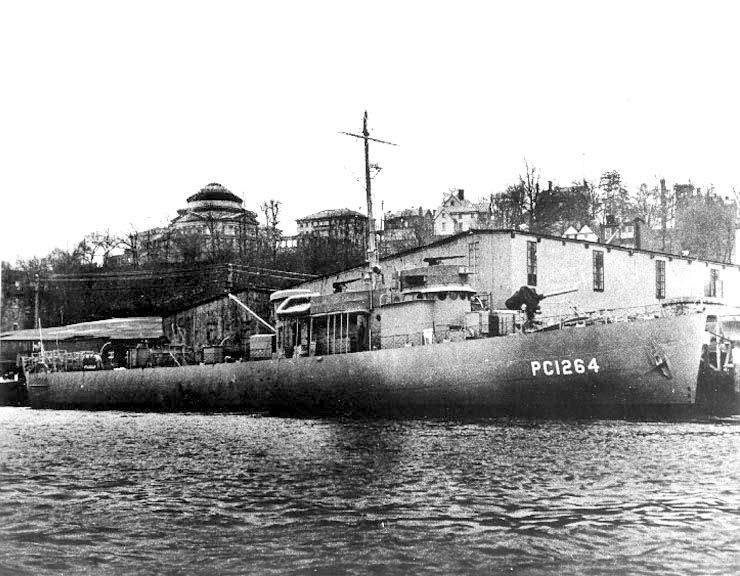
Photo via Wikimedia Commons/Public Domain
In October 1943, the Consolidated Shipbuilding Company began building the USS PC-1264, and it was launched in November of the same year. In 1944, the ship was commissioned, two years after African Americans were allowed to enlist for general service in the Navy. Most notably, the USS PC-1264 was one of two United States Navy ships to have a predominantly African American crew. The other ship to hold this distinction was the USS Mason. The ship was in service for only a short time and was decommissioned in 1946. It was sold for scrap in 1948, but still remains in tact at the former Donjon Marine Yard in Staten Island, New York.
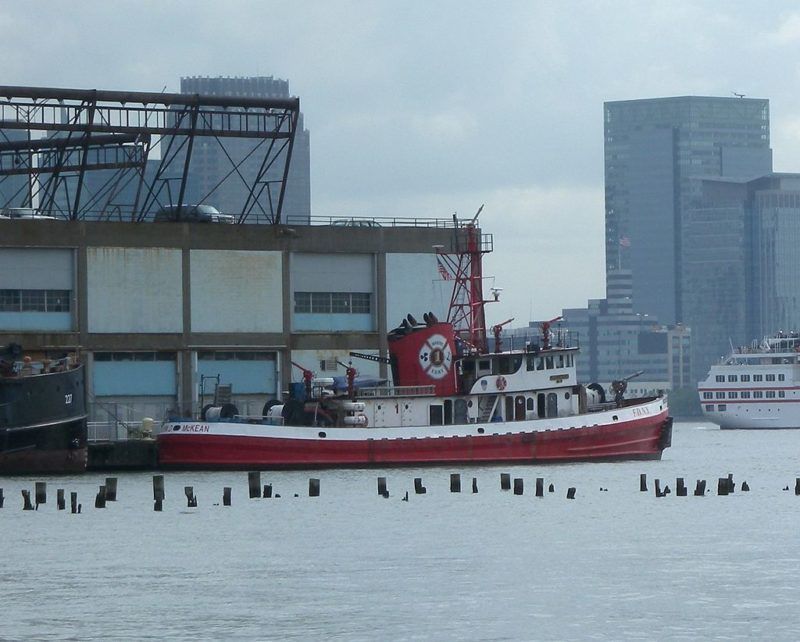
Photo via Wikimedia Commons/Jim.henderson
The John D. McKean served in the FDNY as Marine Company 1 starting in 1954. It was involved during September 11, along with Fire Fighter and the retired John. J Harvey to provide water to firefighters after the water mains broke down. Eight years later, the boat was also involved in rescuing the passengers from the US Airways Flight 1549 accident. In 2010, the John D. McKean was retired and put into reserves.
While many of the boats on this list have some military history, others were used purely for transportation purposes. The Binghamton Ferryboat was one such boat. The Binghamton was in service from 1905 to 1967 and was responsible for transporting passengers across the Hudson River between Hoboken and Manhattan. After it was decommissioned as a means of transportation, it was docked and converted into a restaurant and bar from 1975 to 2007. It was added to the National Register of Historic Places in July of 1982. In 2012, it was announced that the ship-turned-restaurant would be replaced by a new ship, however, the ship still remains docked in Edgewater, New Jersey.

In the early 20th century, the New York Fire Department used predominantly coal-powered ships, including the Abram H. Hewitt, named for the former New York mayor of the same name. The boat served the FDNY from 1903 to 1958 and was the last coal-powered vessel owned by the fire department. The Hewitt was the first FDNY boat to be called when the PS General Slocum caught on fire in 1904, when thousands of passengers lost their lives. After it was decommissioned, the former FDNY ship was taken to the Arthur Kill Ship Graveyard in Staten Island, New York.

We previously wrote about the USCGC Lilac, which was launched in 1933 and was responsible for bringing supplies to lighthouses and buoys. The ship was also involved in rescue and firefighting efforts in times of disaster. The Lilac was decommissioned in 1972 and was the last steam-powered lighthouse or buoy tender in the Coast Guard Fleet, according to the Historic Naval Ships Association. From 1972 to 1984, the ship was used as a stationary training facility for members of the Seafarers International Union. In 2003, it was acquired by the Lilac Preservation Project, who works to restore the Lilac to to its former glory. Currently, the Lilac is docked at Hudson River Park’s Pier 25 and hosts its own floating library and arts series. The ship is open to visitors and admission is free.
Next check out 10 of NYC Floating Bars and Barges to Check Out This Summer and The Abandoned Boats of Coney Island Creek, Brooklyn. Contact the author @jen_bagcal.
Subscribe to our newsletter